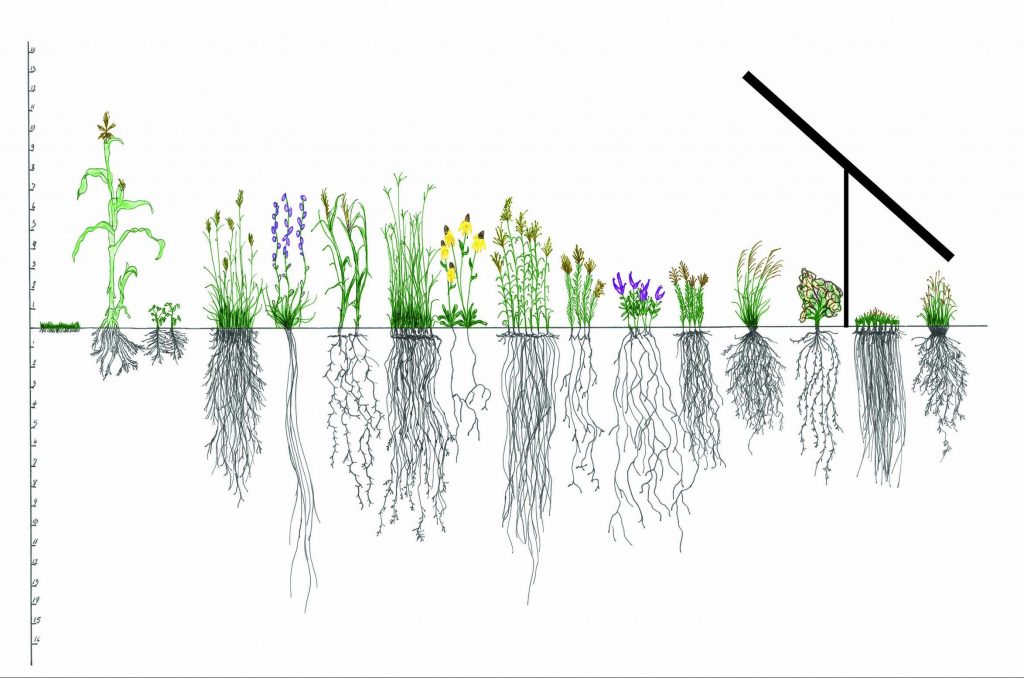Solar
Selecting the Right Vegetation Alleviates Challenges at Solar Energy Facilities
Solar sites present numerous opportunities for successful establishment of native vegetation. The benefits include significant environmental, economic and social benefits compared to conventional vegetation. Native plants have diverse growth habits and wide tolerances across broad environmental conditions, making them ideal candidates to thrive under the range of conditions often found on solar facilities. Native vegetation also has been shown to have lower maintenance costs compared to conventional vegetation.
Native plant species, even shorter stature species, have very deep roots compared turf grass, corn, and soybeans. It is these deeply rooted native prairie and savanna species that restore soil health, store soil carbon, improve surface and ground water quality, and provide beneficial habitats for breeding birds, butterflies, and other pollinator insects. Research has proven that establishing native plants on the land can have remarkable positive effects on the entire ecosystem.
For a solar energy facility, RES staff of ecologists, restoration specialists, and horticulturalists assess field conditions to create the best vegetation plans to match site conditions, stakeholders, including regulatory, and landowner requirements.
Interested? Take a look at our seeding plans here, or simply give our customer service representative a call at (608) 897-8641 or taylorcreek@res.us.
If desired, we can customize a solution for your specific situation.
Benefits: Native Vegetation is a Big Part of the Solution
It’s not all just problem-solving. The use of native plant species on solar facilities offers unique benefits that advance a solar project with the affected stakeholders.
For example:
- Watershed Health. Water quality is the winner when natives are used. Natives will increase infiltration of rain and snow on the site itself, recharging aquifers and reducing runoff and flooding. Natives improve surface and groundwater quality by reducing the discharge of excess sediment, nutrients, and contaminants into local rivers and streams.
- Soil Health. Native plants stabilize soil, increase infiltration, and help sequester carbon and other greenhouse gases to mitigate climate change.
- Biodiversity. Everyone is talking about pollinators. Using native flowers (forbs) to vegetate a solar array, as well as its margins, provides habitat for breeding birds, bees, and other beneficial insects. If the site is in close proximity to natural habitat, the solar site may also increase habitat connectivity and boost beneficial insect populations.

Native plant rooting depths and growth heights
